Dominica / Commonwealth of Dominica / Waitukubuli / Dominik – Let’s explore here
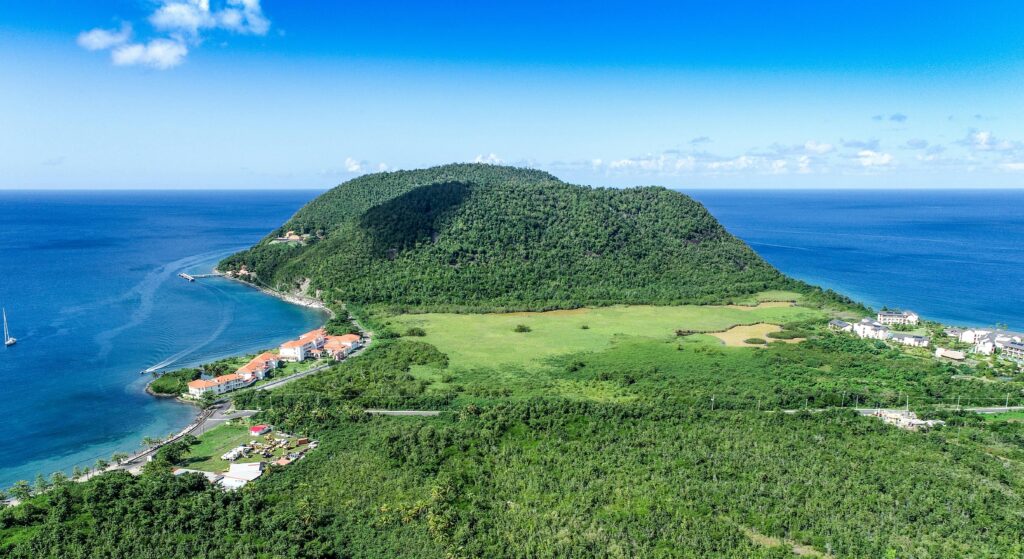
What’s it like in Dominica?
Dominica is a small island in the Caribbean, about twice the size of the Isle of Wight, England, UK, being approximately 29 miles (47 km) long and 16 miles (26 km) wide.
The terrain mostly consists of mountains and forest on Dominica, being part of a volcanic chain. The highest point is Morne Diablotins, at 4,747ft (1,447m) above sea level. The world’s second-largest hot spring, Boiling Lake, is in Dominica.
Dominica’s population is around 72,000 (2021) and its capital, Roseau, is home to around 15,000 people. It relies heavily on tourism like many other Caribbean islands, although its main source of income is banana production.
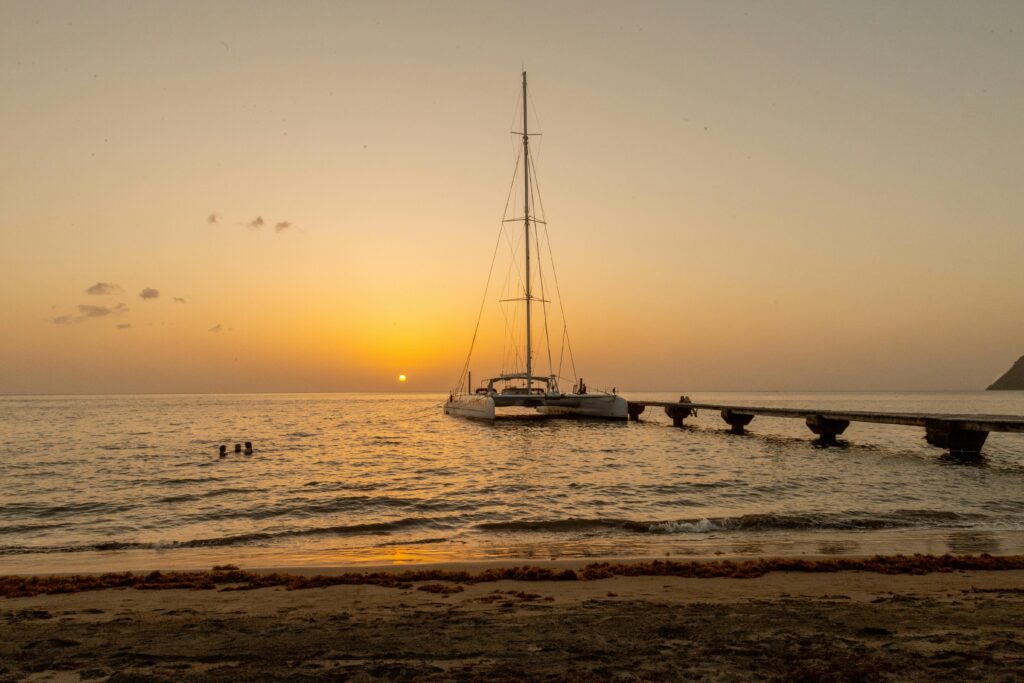
A bit about the history of Dominica
Early History
The island of Dominica was originally inhabited by the Kalinago people (Caribs) when European explorers arrived in the Caribbean. The island’s name comes from the Latin word ‘Dominica’, meaning ‘Sunday’, as it was discovered by Christopher Columbus on a Sunday in 1493. The Kalinago people lived on the island for centuries before European colonisation.
Colonial Era
Dominica was colonised by the French in the 17th century. The French established plantations on the island, primarily growing sugar, but their control was often contested by the British. The island was ceded to Britain in 1763 after the Treaty of Paris, following the Seven Years’ War, and remained a British colony for several centuries.
During the colonial period, Dominica’s economy was largely based on sugar production, but other crops, such as bananas and cocoa, also became important. The enslaved Africans brought to the island worked on the plantations. The British maintained control over the island through military garrisons and local administrations.
Struggle for Independence
Dominica, like many other Caribbean islands, faced a struggle for independence during the 20th century. The island was granted self government in 1967, becoming an associated state of the United Kingdom. This meant that while Dominica was still a British colony, it had internal self rule. In 1978, following a period of increasing nationalist sentiment, Dominica gained full independence from the United Kingdom and became the Commonwealth of Dominica. The country adopted a parliamentary democracy, with a president serving as the head of state and a prime minister as the head of government.
Post-Independence Era
Following independence, Dominica faced economic challenges, with agriculture being the mainstay of the economy. The island was heavily reliant on banana exports, though the banana industry later faced difficulties due to fluctuating global prices and hurricanes. In the 1990s and 2000s, Dominica began diversifying its economy, developing a growing tourism sector, with eco-tourism and natural beauty being major attractions. The island is also known for its efforts to protect its environment, with much of the island being covered by rainforests and protected areas.
Modern Dominica
Dominica has faced natural disasters over the years, with hurricanes causing significant damage. In 2017, Hurricane Maria devastated the island, causing widespread destruction and loss of life. The recovery from the hurricane has been a major focus for the government, with efforts to rebuild and strengthen infrastructure. Today, Dominica remains one of the few Caribbean nations with a strong emphasis on environmental preservation. It is known for its geothermal energy potential, and the country continues to work towards sustainable development while also addressing challenges such as economic growth, climate change, and poverty.
Dominica road trip
Dominica is our tenth planned stop on our road trip through the islands of the Caribbean. Having explored Martinique, our next stop is Guadeloupe.
Travelling overland between the islands is quite prohibitive due to the lack of transportation options. Travelling between different island countries via ferry is possible, however, ferries only operate between some islands. Chartering private boats between islands is also possible, although travelling with a car in this way is prohibitive. Flying is another option, although again, flights only operate between some islands.
Map of our road trip through Dominica
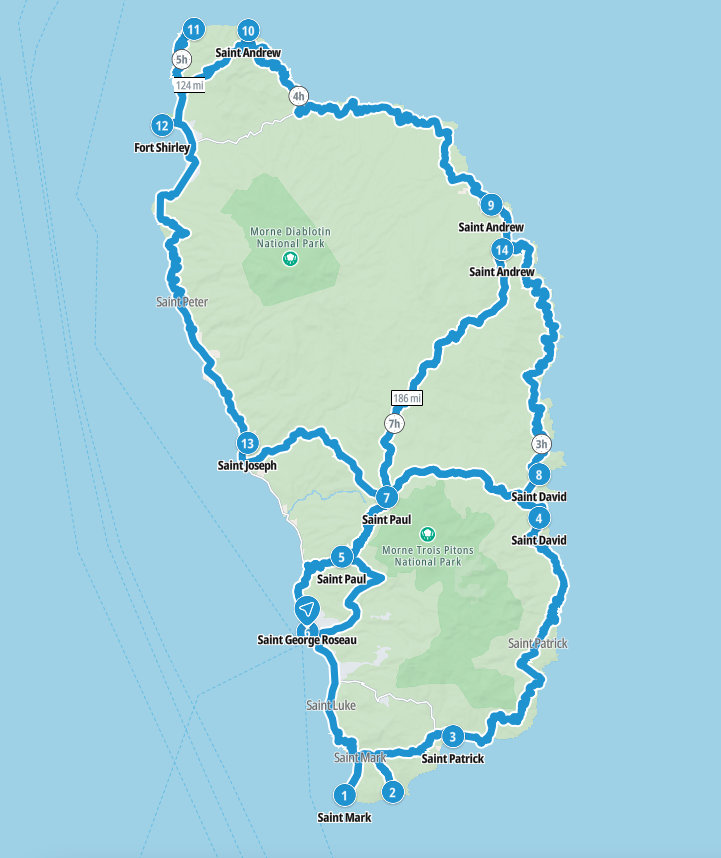
This is a map of our planned route around the island of Dominica, starting and ending in the capital, Roseau.
Weather in Dominica
When is the best time to visit Dominica?
The best time to visit Dominica is from February to April. During these months, the islands have 7-8 hours of sunshine per day and rainfall of 1.7 – 7.1 inches (43 – 179mm) per month. The temperature ranges from 21 – 31°C (71 – 88°F).
When is the worst time to visit Dominica?
The worst time to visit Dominica is from July to December. During these months, the islands still have 7 hours of sunshine per day. However, humidity rises and it rains an average of 4.9 – 13.7 inches (125 – 347mm) per month. The temperature ranges from 22 – 32°C (72 – 90°F).
Hurricane Season in the Caribbean
Hurricane season in the Caribbean runs from June 1 to November 30. Storms tend to be more frequent and more severe in the latter half of the season.
Hurricanes are least likely during December, January and February.
Travel in and around Dominica
Ferries to other Caribbean island countries from Dominica
Travelling between Dominica and Guadeloupe
L’Express des îles Ferries travel between Roseau in Dominica and Pointe a Pitre in Guadeloupe five days per week and the sailing takes 2½ hours.
Travelling between Dominica and Martinique
L’Express des îles Ferries travel between Roseau in Dominica and Martinique five days per week and the sailing takes 2¼ hours.
Travelling between Guadeloupe and Saint Lucia
L’Express des îles Ferries travel between Roseau in Dominica and Saint Lucia five days per week and the sailing takes 4¼ hours.
What’s it like to drive in Dominica?
They drive on the left hand side of the road in Dominica. Car hire is available in Dominica and roads are, in the main, quite well maintained. There are minor roads inland and to bays and coves however that are not maintained and in poor condition. Driving standards are poor however.
We’ve also created a dedicated page to driving abroad, which you might find helpful 🙂
What currency do they use in Dominica?
In Dominica they use the East Caribbean dollar. Cash is widely used. The use of credit / debit cards is widely accepted in major cities, although not in rural areas. Travellers cheques are not accepted in the main. There are ATMs in cities, although not all accept foreign issued cards.
You should make yourself aware of the amount that your bank charges you for using credit and debit cards abroad. Often credit cards are cheaper for purchasing items directly, and for withdrawing cash from ATMs.
What language do they speak in Dominica?
They speak English and Creole in Dominica. French is also widely spoken. English is spoken in tourist areas.
What time zone is Dominica in?
Remember, when you’re planning your next trip to take a look at what time zone it’s in.
Do I need a visa to visit Dominica?
We’ve created a dedicated, more comprehensive page on visas, which you should find helpful. Check it out!
Is wild camping legal in Dominica?
No, wild camping is not widely accepted in Dominica.
What plug / socket type do they use in Dominica?
In Dominica they use plug / socket types D and G.
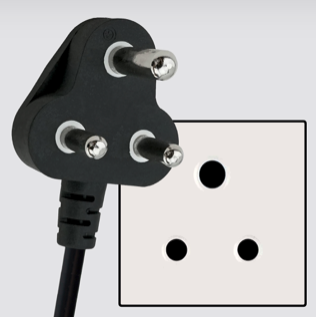
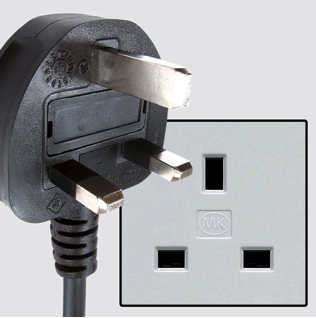
Health issues in Dominica
Is it safe to drink water in Dominica?
Yes, it is safe to drink tap water in Dominica. Bottled water is also readily available across the country.
What vaccinations are required for Dominica?
This NHS website is kept up to date with all relevant information on vaccinations in Dominica.
Phones in Dominica
What is the country calling code for Dominica?
The country calling code for Dominica is +1 767
What are the emergency phone numbers in Dominica?
- The emergency number for police in Dominica is: 999
- In Dominica, the emergency number for ambulance is: 999
- The emergency number for fire in Dominica is: 999
If you’ve got some useful info that you’d like to share, let us know!
And don’t forget to check out all the other pictures!
